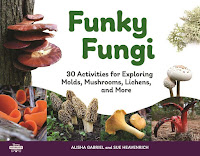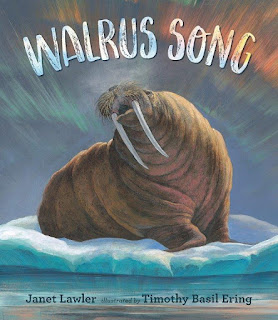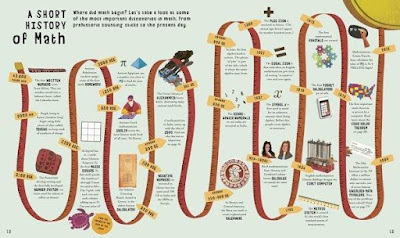 |
| photo by Alisha Gabriel |
Pages
Monday, February 28, 2022
How a Walk Grew into a Book
Friday, February 25, 2022
Sing a Song of Walrus ...
Wednesday, February 23, 2022
Explore Outdoors ~ winter shadows
Monday, February 21, 2022
Researching Informational Fiction: A Little Bit of Dinosaur ~ by Darcy Pattison
Friday, February 18, 2022
You Might Be Part Dinosaur!
Wednesday, February 16, 2022
Explore Outdoors ~ An appreciation of small things
At first glance this looks like a winter weed poking up through the snow. But it's actually the dried bracht from the fruit of an American basswood(Tilia americana). The stem bearing the tiny marble-like fruits grows out of the bracht, a specialized leaf.
This small leaf-bit helicoptered on the wind and eventually landed in my road - where I stopped to marvel at the tiny details of leaf veins.
This week, take time to observe the small things you come across. Dried aster heads and seedpods, leaf skeletons, a jay's feather, cat tracks across the snowy lawn, frozen grasses beneath the roof's drip-line, stubborn oak or maple or beech leaves still clinging to their twigs.
What tiny marvels do you find?
Monday, February 14, 2022
Announcing the #KidsLoveNonfiction Campaign
Nonfiction
books for young people are in a golden age of creativity, information-sharing,
and reader-appeal. But the genre suffers from an image problem and an awareness
problem. The New York Times can play a role in changing that by adding a
set of Nonfiction Best Seller lists for young people: one for picture books,
one for middle grade literature, and one for young adult
literature.
Today’s
nonfiction authors and illustrators are depicting marginalized and minority
communities throughout history and in our current moment. They are sharing
scientific phenomena and cutting-edge discoveries. They are bearing witness to
how art forms shift and transform, and illuminating historical documents and
artifacts long ignored. Some of these book creators are themselves scientists
or historians, journalists or jurists, athletes or artists, models of active
learning and agency for young people passionate about specific topics and
subject areas. Today’s nonfiction continues to push boundaries in form and
function. These innovative titles engage, inform, and inspire readers from
birth to high school.
Babies
delight in board books that offer them photographs of other babies’ faces.
Toddlers and preschoolers fascinated by the world around them pore over books
about insects, animals, and the seasons. Children, tweens, and teens are hungry
for titles about real people that look like them and share their religion,
cultural background, or geographical location, and they devour books about
people living different lives at different times and in different places.
Info-loving kids are captivated by fact books and field guides that fuel their
passions. Young tinkerers, inventors, and creators seek out how-to books that
guide them in making meals, building models, knitting garments, and more.
Numerous studies have described such readers and their passionate interest in
nonfiction (Jobe & Dayton-Sakari, 2002; Moss and Hendershot, 2002; Mohr,
2006). Young people are naturally curious about their world. When they are
allowed to follow their passions and explore what interests them, it bolsters
their overall wellbeing. And the more young people read, the more they grow as
readers, writers, and critical thinkers (Allington & McGill-Franzen, 2021;
Van Bergen et al., 2021).
Research
provides clear evidence that many children prefer nonfiction for their
independent reading, and many more select it to pursue information about their
particular interests (Doiron, 2003; Repaskey et al., 2017; Robertson &
Reese, 2017; Kotaman & Tekin, 2017). Creative and engaging nonfiction
titles can also enhance and support science, social studies, and language arts
curricula. And yet, all too often, children, parents, and teachers do not know
about recently published nonfiction books. Bookstores generally have only a few
shelves devoted to the genre. And classroom and school library book collections
remain dominated by fiction. If families, caregivers, and educators were aware
of the high-quality nonfiction that is published for children every year, the
reading lives of children and their educational experiences could be
significantly enriched.
How
can The New York Times help resolve the gap between readers’ yearning
for engaging nonfiction, on the one hand, and their lack of knowledge of its
existence, on the other? By maintaining separate fiction and nonfiction best
seller lists for young readers just as the Book Review does for adults.
The New York Times Best Sellers lists constitute a vital
cultural touchstone, capturing the interests of readers and trends in the
publishing world. Since their debut in October of 1931, these lists have
evolved to reflect changing trends in publishing and to better inform the
public about readers’ habits. We value the addition of the multi-format
Children’s Best Seller list in July 2000 and subsequent lists organized by
format in October 2004. Though the primary purpose of these lists is to inform,
they undeniably play an important role in shaping what publishers publish and
what children read.
Adding
children’s nonfiction best-seller lists would:
·
Help family members, caregivers, and educators identify worthy
nonfiction titles.
·
Provide a resource for bibliophiles—including book-loving
children—of materials that satisfy their curiosity.
·
Influence publishers’ decision-making.
·
Inform the public about innovative ways to convey information and
ideas through words and images.
·
Inspire schools and public libraries to showcase nonfiction,
broadening its appeal and deepening respect for truth.
We,
the undersigned, strongly believe that by adding a set of nonfiction
best-seller lists for young people, The New York Times can help ensure that
more children, tweens, and teens have access to books they love. Thank you for
considering our request.
Dr. Mary Ann Cappiello
Professor, Language and Literacy
Graduate School of Education, Lesley University
Cambridge, Massachusetts
Former Chair, National Council of Teachers of English (NCTE) Orbis
Pictus Award for Outstanding Nonfiction Committee
Dr. Xenia Hadjioannou
Associate Professor, Language and Literacy Education
Penn State University, Harrisburg Campus
Harrisburg, PA
Vice President of the Children’s Literature Assembly (CLA) of the
National Council of Teachers of English (NCTE).
References
Allington, R. L., & McGill-Franzen, A. M. (2021). Reading
volume and reading achievement: A review of recent research. Reading
Research Quarterly, 56(S1), S231–S238. https://doi.org/10.1002/rrq.404
Correia, M. (2011). Fiction vs. informational texts: Which will
your kindergarteners choose? Young Children, 66(6), 100-104.
Doiron, R. (2003). Boy Books, Girl Books: Should We Re-organize
our School Library Collections? Teacher Librarian, 14-16.
Kotaman H. & Tekin A.K. (2017). Informational and fictional
books: young children's book preferences and teachers' perspectives. Early
Child Development and Care, 187(3-4), 600-614, DOI: 10.1080/03004430.2016.1236092
Jobe, R., & Dayton-Sakari, M. (2002). Infokids: How to use
nonfiction to turn reluctant readers into enthusiastic learners. Markham,
Ontario, Canada: Pembroke.
Mohr, K. A. J. (2006). Children’s choices for recreational
reading: A three-part investigation of selection preferences, rationales, and
processes. Journal of Literacy Research, 38(1), 81–104. https://doi.org/10.1207/s15548430jlr3801_4
Moss, B. & Hendershot, J. (2002). Exploring sixth
graders' selection of nonfiction trade books: when students are given the
opportunity to select nonfiction books, motivation for reading improves. The
Reading Teacher, vol. 56 (1), 6+.
Repaskey, L., Schumm, J. & Johnson, J. (2017). First and
fourth grade boys’ and girls’ preferences for and perceptions about narrative
and expository text. Reading Psychology, 38, 808-847.
Robertson, Sarah-Jane L. & Reese, Elaine. (Mar 2017). The very
hungry caterpillar turned into a butterfly: Children's and parents' enjoyment
of different book genres. Journal of Early Childhood Literacy, 17(1),
3-25.
Van Bergen, E., Vasalampi, K., & Torppa, M. (2021). How are
practice and performance related? Development of reading from age 5 to 15. Reading
Research Quarterly, 56(3), 415–434. https://doi.org/10.1002/rrq.309
If you support the request to add three children's nonfiction bestseller lists to parallel the existing
lists, which focus on fiction, please add your name and
affiliation to the signature collection form.
Friday, February 11, 2022
A Pair of Browsable Books
Wednesday, February 9, 2022
Explore Outdoors ~ noticing texture
A month ago, I found these leaves poking out from a stone wall. I was taken with the juxtaposition of hairy leaves against snow crystals. And there, off to the right, some soft moss...
What textures do you notice around your yard and neighborhood? Check out bark of different trees, old leaves and petals, moss and lichens. Write a list of texture words. My list looks like this: hairy, cushiony (moss), sharp and crystalline (ice).
Monday, February 7, 2022
I have Birds on my Brain
We've got some feeders hanging from the lilac tree outside the kitchen window. Every morning I watch the chickadees and juncos, blue jays and woodpeckers ~ red-bellied, hairy, downy ~ feast upon sunflower seeds and suet. The juncos gather on the mess of intertwined lilac and forsythia twigs, a safe place to wait for the open spot at the feeder. The blue jays wait for no one. And the red-bellied woodpecker has discovered a stout limb below the suet where he can perch and peck away at his heart's content.
Though I've watched birds for many years, this will be the first time I officially count them for the Great Backyard Bird Count.
You might be wondering: hey, Sue, you count pollinators every summer - so why have you been ignoring the birds? Well, the truth is that a number of years ago a bear took down our feeder. After this happened a few times, we sort of gave up. But this year we decided to try again, because we really miss watching our feathery neighbors. And now the birds have told their friends where the buffet is and we anticipate seeing a good number.
Not only that, the Great Backyard Bird Count sounds like fun. All I need to do is:
- watch birds for 15 minutes or more at least once over the President's Birthday long weekend. That's next week, Friday, Feb. 18 - Monday, Feb, 21.
- count all the birds I see or hear during those observation times
- report them using one of the tools listed on the GBBC website.
Since I've got the Merlin app on my phone, I'll probably use that. But
you don't need a smartphone - you can jot down your observations in a
notebook and report them using a computer. In fact, you don't need much of anything except a bird guide and some warm clothes. Binoculars are great, but if you don't have them, rely on your eyes and ears. You don't even need a backyard. You can count birds on your balcony, at a park, at the bus stop, at the school yard, or anywhere you are. Heck! You can sit at your kitchen table where it's toasty warm, and count birds while you enjoy your cup of coffee.
I'm planning to go outside, though. Partly because I want to listen to the birds and partly because I need to rack up some #1000hoursoutside time. And who knows, maybe I'll head down the road and check for birds hanging out by the creek.
The real reason I want to participate is that I know the data we collect will help scientists learn more about where birds are wintering here in the northern hemisphere, and summering in the southern hemisphere. Yup, it's a global event. Find out more at https://www.birdcount.org/.
Friday, February 4, 2022
Krill: mmm-mmm good!
Wednesday, February 2, 2022
Explore Outdoors ~ Springtails in the Tracks
A couple weeks ago I went out snowshoeing. It was a warm day for January – with temperatures all the way into the high 30’s (Fahrenheit). As I tromped along the road between hayfields, I noticed black specks sprinkled around tracks like pepper. They weren’t pepper flakes. They were tiny arthropods called springtails, or snow fleas.
So what were they doing in the tracks? Springtails live
in the top layer of the soil, right under the snow. They spend their winter nibbling
on fungi and decaying leaves, and on warm days they catapult themselves up, up,
up to the surface. As winter turns to spring, these tiny springtails become
spider snacks. You can watch a cool video about them here.
On warm days this month, look for a sprinkling of springtails on the snow around trees in your neighborhood. If you have a magnifying lens, take a close look. They won’t leap too far away.



















